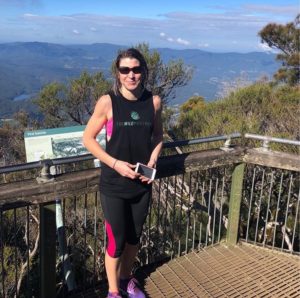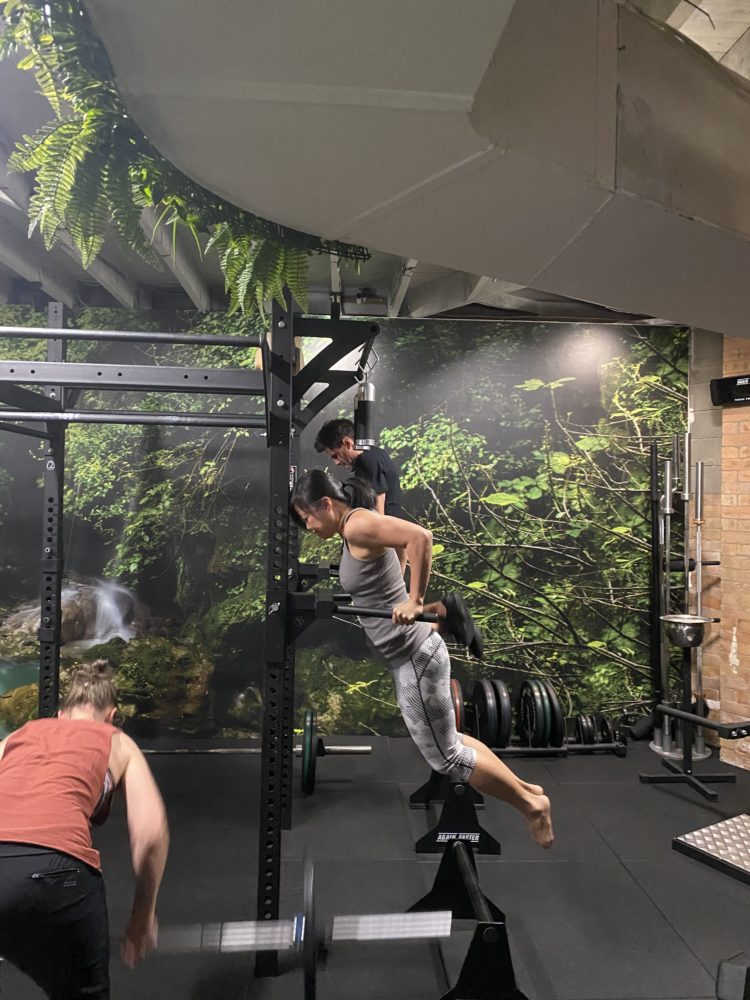The goal of this post is to give you some inspiration by sharing a story about a client who made some important changes in her life to get her health back on track.
Imagine the best version of you, without filters or limits. This vision can become your reality.
This is about Michelle, one of our incredible clients, who started with us 13 months ago.

At the top of Mount Warning on our 2018 Wild Retreat
Michelle had been very active throughout high school and university; however, after graduating as a pharmacist, she worked long and intense hours managing a pharmacy. During these years, she had minimal time to dedicate to herself, let alone to exercise or to prepare wholesome meals. So she took action and followed her gut feeling to become a teacher. Although this is still a demanding role, this career change allowed Michelle more flexibility with her time, and she is now able to spend weekends and school holidays with her husband and young family.
When Michelle came to The Wild Movement, she hadn’t been training and felt like she was not in her best shape, but she was keen to make some changes to be a role model for her family.
We started with our individual consult to get a clear understanding of Michelle’s starting point. We ran through a mobility screening and then went through the fundamentals of squat, dead lift, bench press and chin up.
Physical Transformation
Michelle back squatted 37.5kg for three reps, dead lifted 72.5kg on the trap bar, bench pressed 32.5kg for two reps, completed one underhand chin up and rowed 1km in 4:06. Fast forward 13 months and her strength numbers are now 75kg for squat, 115kg for dead lift, 45kg for bench press, 12 chin ups and a 3:50 1km row!

Look at those back muscles!
Like many of our members, Michelle started by training twice a week to ease herself into a new routine. Her level of enjoyment remained high, as did her personal gains, so she gradually increased her sessions until she was training up to five times per week with us.
These performance results also led to changes in Michelle’s body composition. On her first scan, she was 22% BF and now sits around 12% BF (as per InBody scan). In her opinion, one of the most powerful changes behind these results is the change she made with her family’s eating habits. She attended one of our regular workshops hosted by our resident chef, Jasmine (The Wholefood Goddess), who taught Michelle and other members about Eating The Wild Way. Michelle was so inspired by this workshop; in fact, she went home and made some fundamental dietary changes to better support her active lifestyle with greater nutritional benefits. The good news is that her kids and husband are on board too… mostly!
Of course, it wasn’t an easy and straightforward progression to this point. Michelle writes below about some of her challenges and how she dealt with them.
Michelle’s Reflections
“One of the most challenging tasks that I’ve faced at The Wild Movement is setting goals for myself. This is on a more personal level because I thought that if I didn’t have any goals then there was no risk of failure or disappointment. It’s taken me a good 12 months to gradually change my thought patterns, I still struggle at times, however I’ve come a long way. A big realisation was that if I don’t have any goals then I can never really have any ‘wins’ or sense of achievement and personal growth. So this is how I made some changes… I took a risk and set myself some goals, I got out of my comfort zone by writing them down for everyone to see, and I started saying ‘yes’ more often to things I didn’t think I could do. Most importantly, I keep setting myself measureable goals with a date claimer to help me to stay motivated and to keep having fun whilst trying to chase down my goals.
Achieving a balanced life by learning to listen to my own body was another hurdle I had to overcome. Just through increased movement and mindfulness, I developed a greater awareness about when I can push myself harder to make some lasting changes and when I need to back-off and let my body rest and recover. I must admit, it’s still hard knowing the difference between good pain and bad pain, but I know I can get trusted advice and recommendations from Luke and the other coaches.
My greatest challenge over the last year has been learning to invest more time and energy in myself. My time so far at The Wild Movement has been the longest and most committed I have ever been to my strength training. The difference this time is I’ve realised that in order to look after my family, I need to look after myself, by feeling energised and making exercise a priority rather than an ‘add-on’ if there’s time. The coaches, together with the community at The Wild Movement, have greatly contributed to the longevity and success of my training, which is now an embedded part of my life and my family’s lives.”
Everyone’s measures of success are dynamic in nature and unique to that individual. As you’ve just read, success is rarely an easy and straightforward process; however, with the right support and environment, you too can start taking small steps in the direction that is right for you.
If you would like to have a chat with us to see if we can help you like we have with Michelle and so many other members just click HERE and send us a message.









